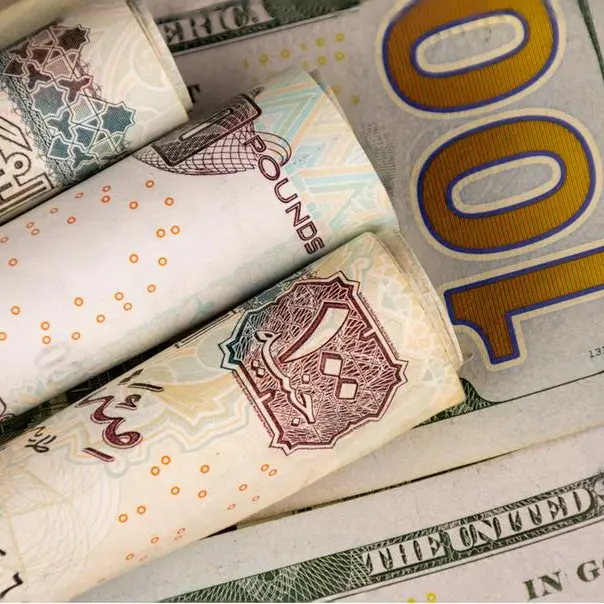PHOTO
With a total net worth of $2.19 trillion between 2018 and 2019, recent growth of around 6.9 per cent and notable developments in financial products in the past decade, the Islamic financial industry has attracted investors, researchers, governments and other stakeholders to participate, contribute as well as engage in the analysis of its prospects and challenges.
There have been a number of recent advancements in light of key challenges in the two major markets of the Islamic financial industry, that is the Islamic banking market and the Sukuk market, which also offer interesting new prospects and potential ways forward for the industry.
THE ISLAMIC BANKING MARKETS
The IFSI Stability Report 2019 reconfirmed the continued predominance of Islamic banks share in the global Islamic finance industry, amounting to 71.7 per cent share in 2019, with $1571.3 billion total value of banking assets.
The main contributors of this share are banks in Saudi Arabia (20.2 per cent), Iran (32.1 per cent) as well as Malaysia (10.8 per cent) and the UAE (9.8 per cent). However, globally, this sector registered only 0.9 per cent growth in total assets during 2018-2019 compared to a 4.1 per cent growth in assets as well as a 7.5 per cent growth in liabilities during 2017-2018), which is less than what was forecast in the S&P Global Ratings Islamic Finance Outlook 2019 (IFO) report.
Slow economic growth in GCC economies, mainly due to volatile oil prices, has resulted in reduced opportunities for the banking sector which has, in turn, led to a sluggish lending growth across the region between 2013 and 2017.
Islamic banks in the Arabian Gulf region, however, showed faster growth than their conventional peers during the same period, which is attributed to rapid modernisation, strategic initiatives, enhanced quality control and the strong financial performances of Kuwaiti, Qatari and Emirati Islamic banks.
S&P Global expects further expansion in Islamic banks in the GCC region and an average financing growth of up to five per cent in the next two years, supported by strategic initiatives such as the Expo 2020 Dubai, the Saudi Vision 2030 as well as the Qatar World Cup 2020 and the Kuwait 2035 Vision.
Growth in Islamic financing through banks in this region is expected to contribute to an unweighted and steady average economic growth of 2.5 per cent in the next few years. However, this is significantly lower than what the region delivered back in 2012.
The predicted risks of Islamic banking operations in the Gulf region, as identified and agreed by the S&P report, the World Bank as well as Islamic Financial Services Board (IFSB), are a higher cost of risk and lower profitability.
S&P expects standardisation of Shariah compliance to contribute to an improvement in the clarity of investment risk vis a vis risk management, which will eventually reduce the cost of risk for Islamic banks.
According to IFSB reports, growth in Shariah compliant financing by Islamic banks across the globe was only 3.3 per cent between 2017 and 2018, compared to the previous year where this growth was a mammoth 19 per cent. Clarifying risks for investors and creating extra scope for innovation in Islamic banking operations is, therefore, an essential step that the industry should consider.
Moreover, the introduction of fintechs across all stakeholders in the Islamic banking industry is also expected to reduce transaction costs and risks. This should include adopting and applying state of the art technology to ensure:
ease and speed of transactions (e.g. money transfers).
improved traceability and security of transactions (e.g.
blockchain to help reduce exposure to risks related to identity theft).
enhanced accessibility of Islamic financial services (e.g.
crowdfunding for affordable housing, mobile banking for remote areas).
clearer and more robust compliance with regulations and Shariah requirements (e.g. regtech to minimise the reputation risk related to a potential breach of Shariah requirements). While fintech solution sounds attractive to a young, educated and tech-savvy generation of bankers and banking stakeholders, the implementation is far from simple.
The combination of adequate supervision and a strongly enforced regulatory framework of banking and finance remains the single most important prerequisite for the successful implementation and diffusion of fintech in the Islamic banking industry.
The recent growth of fintech firms across the world is an excellent value chain development, with a 70 per cent healthy share of these firms offering cutting edge solutions in the provision of financial services. The main concentration of Islamic fintech firms has been in Asia, Europe and the MENA region, with 46 per cent firms covering the Asian market and around 24 per cent operating in each of the other two regions.
THE SUKUK MARKET
According to the IFSI Stability Report 2019, in contrast to the Islamic banking sector, the Islamic capital market demonstrated 25 per cent increase in growth despite only a 27 per cent share in total Islamic financial services. The majority of this share is comprised of the Sukuk market, with total Sukuk outstanding amounting to $530.4 billion between 2018 an d 2019, followed by a growth of 5.5 per cent over the amount in 2017.
Islamic financial assets are mainly concentrated in the GCC (42.3 per cent) and in Asia (28.2 per cent), with large proportions of sovereign Sukuk issued by two major contributors, Saudi Arabia (31.9 per cent) and Malaysia (32.8 per cent).
Other countries which played a vital role in the recent growth of the Sukuk market are the UAE, Indonesia and Bahrain. According to the International Islamic Financial Market (IIFM) report, there has been sustained growth in Sukuk issuance from sovereign issuers (45 per cent of the total issuance), while growth in corporate and financial institutions issuance (27.5 per cent and 7.7 per cent of the total issuance, respectively) also remained stable.
Following two major drops in global issuance of Sukuk in 2014 and 2015, the global Sukuk market observed a sharp increase in international Sukuk issuance in 2016 and 2017, registering 29 per cent and 32 per cent, growth.
However, the growth in issuance suffered a huge slump to 5.5 per cent in 2018. An almost identical trend is visible in the issuance of domestic Sukuk. IIFM reports argue that the drop in 2018 is largely due to the loss of reputation associated with the Shariah non-compliance surrounding the infamous Dana Gas Sukuk legal battle.
A major development following the incident is a standardised mechanism for Shariah compliant foreign currency hedging, developed jointly by IIFM and ISDA. The standardisation of Shariah compliance enables the issuer to issue Sukuk in other jurisdictions without exposing the Sukuk holders to foreign exchange and rate of return mismatch risks. The new issuance includes environmentally friendly Green Sukuk, socially responsible Sukuk and Sukuk related to blockchains.
Moreover, investors in the Sukuk market are regaining hope due to the re-issuance of $500 million worth of short term Sukuk by International Islamic Liquidity Management Corporation. The recent release of the global industry standard for buying and selling Islamic trade-related risk to support the growth of Islamic trade finance business has also been a welcome change.
S&P suggested that the process of standardisation of Shariah compliance across the Islamic financial markets is still slow, and despite significant efforts made by standard- setting bodies, some market participants still consider the process to be an unrealistic one and instead argue in favour of harmonisation that would allow for some flexibility for implementation.
This debate is live, and addressing it requires a separate and perhaps more comprehensive discussion. Issues related to standardisation and adoption of fintech in the Sukuk market, therefore, remain a challenge.
For the Sukuk market, successful adoption and diffusion of fintech (e.g. regtech) is only possible after a reasonable level of standardisation has been accomplished, ensuring that the newly adopted technology can work in sync with strong recovery and resolution regimes, agreed and enforced networks of risk sharing and risk management, and access to a resource base (e.g. expertise and human capital) conducive to cost-effective management and development of innovation and technology, based on the core principles of Shariah compliance.
ISLAMIC BANKS IN THE ARABIAN GULF REGION SHOWED FASTER GROWTH THAN THEIR CONVENTIONAL PEERS BETWEEN 2013- 2017 WHICH IS ATTRIBUTED TO THE RAPID MODERNISATION, STRATEGIC INITIATIVES, ENHANCED QUALITY CONTROL AND THE STRONG FINANCIAL PERFORMANCES OF KUWAITI, QATARI AND EMIRATI ISLAMIC BANKS.
Dr Sheikh Selim
THERE HAS BEEN SUSTAINED GROWTH IN SUKUK ISSUANCE FROM SOVEREIGN ISSUERS (45 PER CENT OF THE TOTAL ISSUANCE), WHILE GROWTH IN CORPORATE AND FINANCIAL INSTITUTIONS ISSUANCE (27.5 PER CENT AND 7.7 PER CENT OF THE TOTAL ISSUANCE, RESPECTIVELY) ALSO REMAINED STABLE.
2020 CPI Financial. All rights reserved. Provided by SyndiGate Media Inc. (Syndigate.info).























